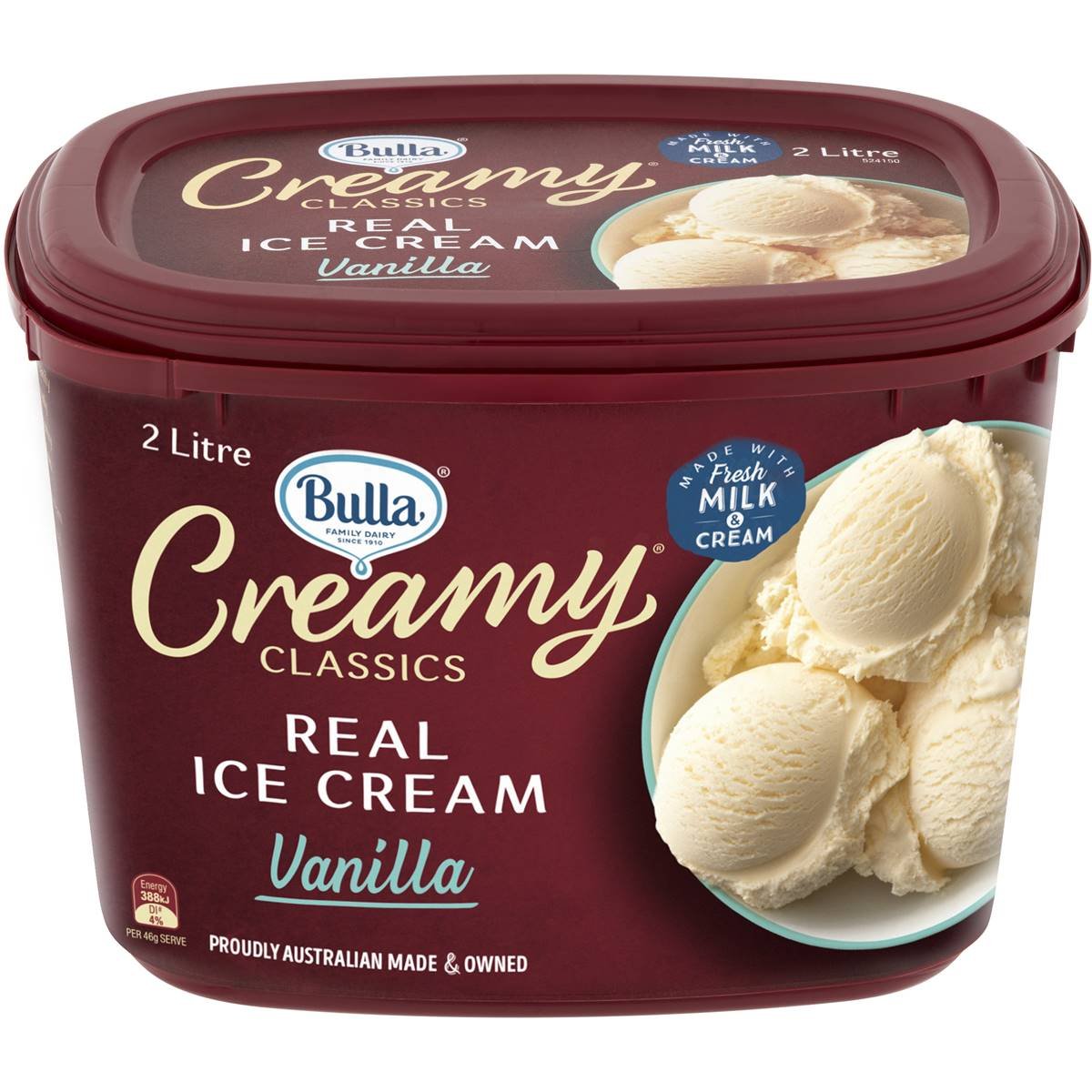Ice cream: A summer favourite
Summer is here! Even though this may be hard to believe with all the rain we’ve had this year. In summer, people love to eat ice cream. It tastes delicious, but wait… isn’t it high in calories and added sugar? What if I just can’t resist it? Are there some ice creams on the market that are a bit healthier, that we can still enjoy without sacrificing on taste? Come with Dietitian Tuo to explore some good options out there in 2023.
I usually put ice cream into four categories.
1. Traditional ice cream
Traditional ice cream normally contains around 750 to 1200kj calories, 20-30g sugar and 6 -15g fat per 100g. Added sugar and/or glucose syrup are normally in the first three ingredients listed on the ingredient list. You can use these criteria to judge if an ice cream is traditional or not. Due to the high calorie and sugar content, traditional ice cream affects your blood sugar level significantly if you eat it on a regular basis. It is wise to only enjoy it occasionally, and a small portion at a time.
An example of a traditional ice cream.
2. Pretend-to-be-healthy ice cream
This category normally gives people a false impression that these ice creams are healthy. However, most of them have a common issue – they’re high in sugar. Firstly, you need to be very careful when you see these words on the packaging: “light”, “fruit”, “plant based”, “frozen yoghurt” and “sorbet”. All of these words could be an indication that the product is high in sugar. Secondly, check the nutrition information panel. If is contains more than 18g of sugar per 100g, and/or “sugar” or “glucose” or “reconstituted fruit juice” are within the top 3 ingredients on the ingredient list, they are not healthy. These ice creams also affect your blood sugar level significantly if you eat them regularly. It is wise to only enjoy them occasionally.
An example of a Pretend-to-be-healthy ‘fat free‘ ice cream.
3. Low sugar high fat ice cream
If you notice the fat content is more than 14g per 100g, calories are more than 800kj and the sugar is quite low, they all belong to this category! The high fat content is because of large amounts of cream, coconut cream or coconut oil. It’s great that they are very low in sugar. However, although none of these ingredients affect your blood sugar level directly, having more-than-our-body-needs amounts of fat and calories will convert into fats that we store in our body and liver. In addition, you probably have noticed that a lot of them are served in smaller tubs. Not surprisingly, it’s easy for people to find themselves eating the whole tub in front of TV on a hot Saturday afternoon! Overall, although they are slightly better than ice creams that fall into the first two categories, please be mindful of how much you eat. The only exception is the Licks 99% Sugar Free Rich Chocolate stick. I like these because they are portion controlled.
An example of a low sugar high fat ice cream
4. Low sugar and low fat ice cream
These ice creams are generally considered to be a healthier option due to the low sugar, moderate fat and moderate calorie content. I have shared some options here and where you can find them as an easy reference.
Erythritol, stevia, xylitol and polydextrose are four of the common ingredients these ice creams contain, which could help them achieve their comparatively lower sugar and fat content, whilst till retaining their traditional ice cream flavour and texture. In a nutshell, erythritol and xylitol belong to the sugar alcohol group, which contain much less calories than sugar. Stevia is a natural sweetener. Together these three ingredients all help create the sweet, low sugar ice cream sensation. Polydextrose is a soluble fiber, a non-digestible carbohydrate that cannot be readily digested in the small intestine and is broken down by bacteria in the large intestine and provides some calories. It gives low sugar ice cream the creamy, smooth taste and texture. All these ingredients are very safe to have.
As more new ice creams appear in the supermarket, knowing how to identify which of these are better options is a cool skill to have. You’ll be able to find the right product for you next time you go shopping if you follow this: Per 100g, look for between 500-600kj energy, less than 14g carbohydrates, and less than 6g fat.
To save you some time in supermarket, dietitian Tuo has already picked up ten options for you.
My top 10 ice creams for you
Of course, if you are able to just have a small portion e.g., 1-2 scoops once a week, you are more than welcome to have traditional ice cream. This is because healthy eating allows “party food” occasionally. However, if you struggle to stop eating ice cream once you start, I hope the ice creams listed here will provide some better options for you. Let’s keep in touch.
After more great ideas to help you maintain a healthy weight and your blood sugar levels, without sacrificing on the tastes you love? Book an appointment to see Dietitian Tuo today for personalised, one-on-one nutrition advice tailored to your individual needs and goals.







